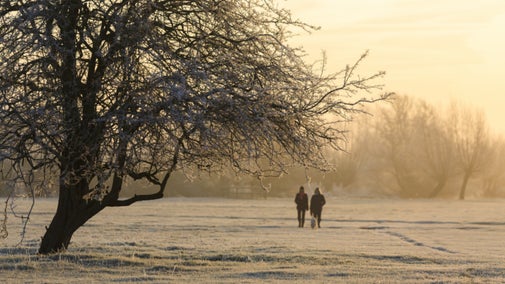Lavenham to Long Melford railway walk
Suffolk
Take a self-guided walk through woods and open fields from Lavenham to Long Melford along a route that largely follows the old GER Lavenham to Long Melford railway line. See a Site of Special Scientific Interest (SSSI), and the site of an 1891 railway accident. Finish by visiting Melford Hall, home of the Hyde-Parker family, in a well-preserved medieval ‘wool village’.
Near to
Lavenham GuildhallStart point
Lavenham Guildhall, grid ref TL916493Trail information
Wild flowers, wildlife and wool
This walk provides the opportunity to see wild flowers alongside birds and animal wildlife in their natural habitat. Ideal for adventurer families.
More near here
Lavenham Woodland walk
Spot rare butterflies and countryside views worthy of Constable, as you explore the woodland community project and an old railway line trail around Lavenham.

Melford Hall countryside walk
Enjoy views of open fields, gently rolling hills, beautiful vistas, distant churches and clear running brooks on a walk through Suffolk countryside.

Get in touch
Our partners

We’ve partnered with Cotswold Outdoor to help everyone make the most of their time outdoors in the places we care for.
You might also be interested in
Walking
Explore some of the finest landscapes in our care on coastal paths, accessible trails, woodland walks and everything in between. Find the best places to walk near you.

Walking in Suffolk
From strolls around famous historic sites to wanders through patchworks of purple heather, these are some of the best winter walks in Suffolk.

Follow the Countryside Code
Help to look after National Trust places by observing a few simple guidelines during your visit and following the Countryside Code.




